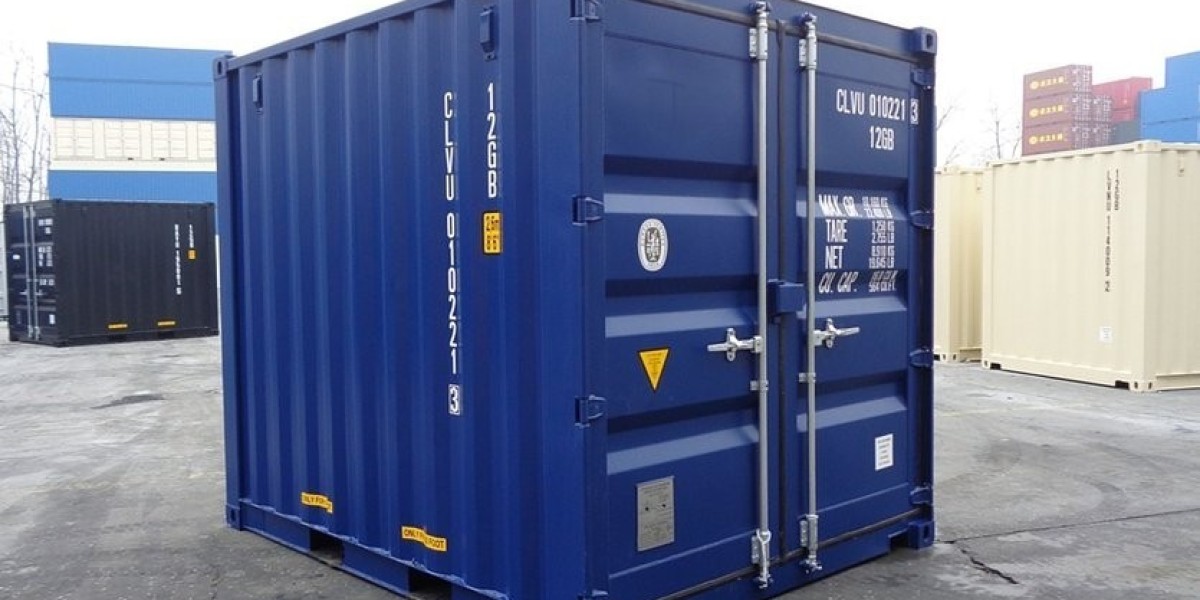Shipping containers have become a cornerstone of global trade and logistics, enabling the seamless transportation of goods across oceans, borders, and continents. Among the various sizes available, 30ft shipping containers strike a balance that meets the needs of businesses requiring more storage than a 20ft container but less bulk than a 40ft container. If you’re curious about their applications, benefits, and overall functionality, this comprehensive guide will explore everything you need to know about 30ft shipping containers.
What Are 30ft Shipping Containers?
A 30ft shipping container falls squarely in the middle of standard container sizes. These units are 30 feet (9.144 meters) long, 8 feet (2.44 meters) wide, and typically 8.5 feet (2.59 meters) high – although high-cube models offering an extra foot of height are also available (9ft, or 2.74 meters).
Built from durable materials like corten steel and engineered to withstand harsh environments, 30ft shipping containers serve various purposes beyond their primary use in shipping, including storage, construction, and customization into functional spaces. They are particularly well-suited to those seeking versatile mid-sized solutions.
Key Dimensions and Specifications
Knowing the specifications for 30ft shipping containers is fundamental to determining if they’re the right fit for your needs. Here’s a breakdown:
External Dimensions:
- Length: 30ft (9.144 meters)
- Width: 8ft (2.44 meters)
- Height: 8.5ft (standard) or 9ft (high cube)
Internal Dimensions:
- Length: Approx. 29.5ft (9 meters)
- Width: 7.8ft (2.39 meters)
- Height: 7.9ft (2.39 meters) for standard containers; 8.8ft (2.69 meters) for high cube containers.
Volume:
- Standard container: ~67m³
- High cube container: ~75m³
Weight and Payload Capacity:
- Tare weight (empty): Around 3,000-4,200 kg
- Maximum payload: Up to 28,000 kg (varies based on design and manufacturer)
These specifications make them ideal for industries requiring a compact yet spacious solution for mid-range goods or projects.
Applications of 30ft Shipping Containers
While shipping remains their primary purpose, 30ft containers have expanded into a variety of other uses that serve businesses, individuals, and industries alike. Below are some notable applications:
Freight and Logistics
- Efficient for transporting mid-sized shipments, especially when the cargo volume surpasses the capacity of a 20ft container but doesn’t warrant the expense of a 40ft unit.
- Suitable for retail inventory, machinery, furniture, or agricultural products.
Storage
- Offers secure and durable on-site storage for construction companies, event organizers, or commercial facilities.
- Ideal for storing equipment, seasonal products, or even household belongings during relocations or renovations.
Construction and Customization
- Commonly repurposed into modular structures such as offices, cafes, pop-up shops, or tiny homes. The 30ft size provides a comfortable foundation without overwhelming space requirements.
- Can also be utilized in disaster relief scenarios, serving as temporary housing or medical units.
Agricultural and Environmental Purposes
- Used to build vertical farms, hydroponic systems, or climate-controlled areas for agricultural production.
- Act as framework for green solutions like portable water treatment units or renewable energy systems.
Events and Exhibitions
- Customized into mobile galleries, exhibition spaces, or promotional booths at fairs, trade shows, and public gatherings.
Advantages of 30ft Shipping Containers
Opting for a 30ft shipping container comes with several benefits, making them a sought-after choice across industries and applications. Here are the top advantages:
Versatility
Their mid-range size makes them perfect for users who need a balance between compactness and large capacity. This flexibility has made them invaluable for various purposes, from storage to architectural projects.Durability
Built to withstand extreme weather conditions, these containers are corrosion-resistant and offer long-lasting resilience with minimal maintenance.Cost-Effectiveness
Larger than a 20ft unit but less costly than a 40ft version, a 30ft container can be budget-friendly for small- to medium-sized projects or businesses.Ease of Transportation
Though larger than a 20ft container, they are still easier to transport and maneuver than their 40ft counterparts. This size is particularly useful for tighter spaces or restricted shipping routes.Customizable Design
The 30ft size offers ample surface area for customization. Whether repurposing it for commercial, residential, or industrial use, this unit offers significant adaptability.Environmentally Friendly
Repurposing shipping containers reduces demand for new materials, aligns with sustainable construction practices, and minimizes waste.
Things to Consider When Using 30ft Shipping Containers
Before renting or purchasing a 30ft shipping container Prices, keep the following key considerations in mind:
Permits and Regulations
Some locations might require zoning permits for container storage or modifications. Always check local laws and building codes first.Transport Logistics
Confirm that the container’s final destination can accommodate both its size and the vehicle needed for delivery.Condition
Inspect the container for rust, dents, or structural issues before buying or renting, particularly if opting for a used container.Customization Costs
While containers are highly versatile, customizing them can incur significant costs depending on the project’s specifics. Plan your budget accordingly.Insulation and Ventilation
If using the container for temperature-sensitive programs, ensure appropriate insulation and airflow to maintain ideal conditions.
FAQs
1. How does a 30ft container compare to other standard sizes?
A 30ft container bridges the gap between 20ft and 40ft containers. It provides more storage than a 20ft option without the bulk of a 40ft unit, making it suitable for mid-sized requirements.
2. What is the lifespan of a 30ft shipping container?
When maintained properly, a shipping container can last anywhere from 20 to 30 years. Factors such as usage, weather conditions, and material quality can influence longevity.
3. Can a 30ft container be customized?
Yes, 30ft containers are highly customizable and can be converted into homes, offices, pop-up shops, or other creative spaces.
4. Are 30ft containers available worldwide?
Although not as common as 20ft or 40ft containers, many suppliers offer 30ft containers for sale or rent. Availability may vary based on location and demand.
5. What’s the cost of a 30ft container?
Prices depend on factors like condition (new or used), modifications, and geographic location. On average, you can expect to pay between £3,000 and £7,000 for a standard unit.

Final Thoughts
From logistics to DIY construction projects, 30ft shipping containers are a versatile and practical solution that bridges the gap between compactness and spacious capacity. Their durability, cost-effectiveness, and adaptability make them a valuable asset across industries. Before investing in one, carefully consider your specific needs, local regulations, and potential customization options to make the most of your purchase.
Whether you're transporting goods across the globe or building a unique architectural masterpiece, a 30ft shipping container might just be the perfect fit for your next big idea.






